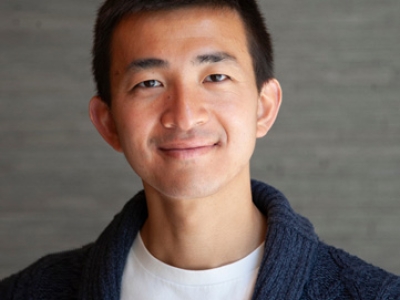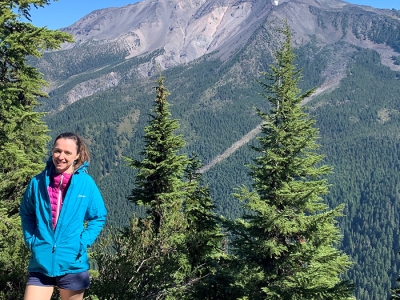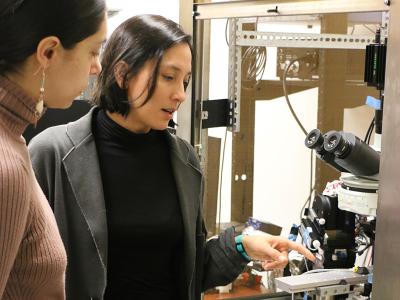About

About
The Rose Hills Innovator Program supports distinguished early-career faculty at UC Berkeley interested in developing highly innovative research programs in the fields of science, technology, engineering, and math (STEM). The program intends to strengthen the efforts of UC Berkeley’s world-class faculty by providing seed support for projects with an exceptionally high scientific promise that may generate significant follow-on funding.
How to Apply
Applications for the 2025 cycle were due January 29, 2025.
Awards of up to $88,700 per year for up to 2 years. Please review the proposal guidelines and upload your application materials using the application form linked below. If you have questions about overall program parameters and guidelines, please consult the FAQ below. Please contact research@berkeley.edu if you have any additional questions.
Note that only full-time UC Berkeley faculty at the Assistant and Associate ranks of any professorial series (including adjunct, in-residence, health sciences, clinical, and professor of clinical optometry) are eligible to apply.
Submission Instructions
Proposals are reviewed by faculty peers from STEM departments across campus. Please be cognizant that reviewers will come from different STEM disciplines, so proposals must be accessible for a general science community.
Please submit the following as a single pdf utilizing the following application form:
- Cover Page & Abstract (one page max)
- PI’s name
- Rank/Title
- Department
- Indicate the proposed research topic/area of study
- Project abstract, which should clearly outline the overarching goals of the research proposal in a way that is accessible to a lay-audience (200 words max)
- Research Proposal (up to five pages, with pages numbered, excluding references, CV, and budget justification). The narrative should:
- Demonstrate how this research will make a significant scientific contribution to the field
- Discuss anticipated milestones and evidence that the project can be completed within the proposed timeline
- Provide an outline of how the support from the Rose Hills Innovator Program will enhance the project
- Identify opportunities for follow-on funding
- A brief paragraph on current and pending funding, matching grants and gifts-in-kind.
- Budget Justification: A detailed budget is not required, however a description/justification of how the support from the Rose Hills Innovator Program will enhance the project is required. Up to $88,700 per year is available for two years. The funding may be used to support:
- Postdoctoral and other researchers
- Graduate and/or undergraduate students
- Faculty summer salary
- Publication expenses and/or patent application fees
- Research materials, small equipment, and/or supplies
- Travel expenses
- Overhead is not allowed to be deducted from the funds
- CV or Biosketch (abridged, two-page format) for the PI.
Since this is an internal solicitation, proposals must be submitted directly to the Vice Chancellor for Research Office via this application form and not through SPO.
Frequently Asked Questions
- What is the Rose Hills Innovator Program?
The Rose Hills Innovator Program supports distinguished early-career faculty at UC Berkeley interested in developing highly innovative research programs in the fields of science, technology, engineering and math (STEM). The program intends to strengthen the efforts of UC Berkeley’s world-class faculty by providing seed support for projects with exceptionally high scientific promise that may generate significant follow-on funding.
- How can funds be spent?
The funding may be used to support faculty summer salary for up to one month; researchers, postdoctoral researchers, graduate and/or undergraduate students; to cover publication expenses and/or patent application fees, research materials, small equipment, supplies, and/or travel expenses.
A detailed budget is not required as part of the 5 page proposal, however an outline describing how the funding will be spent to enhance the project is required. Overhead is not allowed to be deducted from the funds.
- Do applications need to be submitted to SPO for review?
No. Applications must be submitted directly to the VCRO via the link to the application form provided in the How to Apply section.
- What are the expectations of the Rose Hills Innovators?
Rose Hills Innovators will be required to provide regular updates on their research progress and milestones achieved. Some reporting may be required beyond the project end date to market the success of the program. During the project time period, Innovators may change the direction of their research as necessitated by scientific discovery, access to funding, etc. Only major changes in direction should be coordinated in advance with the Rose Hills Innovators program manager.
- Who is eligible to apply?
Applications to the program are restricted to full-time UC Berkeley faculty at the Assistant and Associate ranks of any professorial series (including adjunct, in-residence, health sciences, clinical, and professor of clinical optometry) who work in the fields of science, technology, engineering, and math (STEM). Bio-medical research is eligible for support.
Applicants must be full-time faculty at the university at the start of, and during the entire award period. If an applicant is an Associate Professor, then they should be at the Associate level for at least the first year of funding starting July 1.
- Are multi-PI proposals permitted? If so, do all PIs need to meet the eligibility requirements?
The award may go to a single faculty PI or a faculty team. For team awards, all co-PIs must meet all the necessary criteria. The PI/co-PIs may collaborate with other researchers/faculty and it is not necessary for collaborators to meet the eligibility requirements. Collaborations may extend beyond UC Berkeley. The Innovator/s (PI or co-PIs for a team award) will be selected for their excellence and high potential for making a lasting impact.
- When is the application deadline?
Applications for the 2025 Rose Hills Innovator Program were due on January 29, 2025.
- How are the Rose Hills Innovators selected?
The Innovators will be selected for their excellence and high potential for making a lasting impact. More specific selection criteria include the following:
- The research must be novel and capable of yielding significant advances within a reasonable time frame.
- Applicants should provide specific milestones that will allow the Advisory Committee to assess at the end of each year whether the program support has achieved its goals.
- Proposals should demonstrate the benefit that the research will gain from support through the Rose Hills Innovator Program. Additional existing and pending sources of funding, matching grants and gifts-in-kind should be included.
The selection process involves an Academic Advisory Committee comprised of faculty from across the STEM disciplines.
- When does support start?
Successful applicants to the Rose Hills Innovator Program will receive their awards in July.
- Which campus unit administers the Rose Hills Innovator Program?
The Rose Hills Innovator Program is managed by the Office of the Vice Chancellor for Research.
- Is the current and pending funding narrative supposed to be included in the 5-page research description?
Yes, if however this takes up more than a short paragraph, then it's OK to exceed the 5 page limit. Please note that we are looking for a short narrative rather than the C&P form submitted to say NSF.
- I have additional questions, who do I contact?
Please write to research@berkeley.edu with any additional questions you might have.
Fellows
2024 Fellows
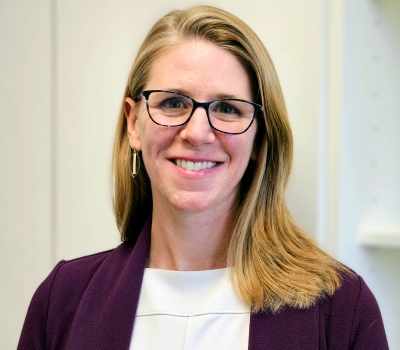
Title: Investigating Astrocyte Function in Health and Disease
Abstract: The brain comprises a multitude of cell types that together coordinate neural development, activity, and plasticity. While much research in neurobiology has focused on neurons, the cells which fire action potentials and form neural circuits, approximately 50% of brain cells are non-neuronal. These include various types of glial cells, the most abundant of which are astrocytes. While traditionally thought to play mere supportive functions, it is now known that astrocytes are active players that sculpt neuronal development and activity. Recently, the role of glial cells in neurological disease has become appreciated and there is growing interest in understanding the molecular properties of these cells, as they could be potential therapeutic targets. In this study, we will examine how the mTOR signaling pathway regulates astrocyte function in the brain. We will test the idea that overactive mTOR signaling, which occurs in several neuropsychiatric disorders, causes astrocytes to lose their supportive functions and gain neurotoxic functions. We propose that astrocytic dysfunction is sufficient to alter the activity of surrounding neurons and thereby drive disease phenotypes. In addition, we will explore the idea that suppression of mTOR signaling could be used therapeutically to treat brain disorders caused by aberrant glial cell function.
Profile: Dr. Bateup graduated from The Rockefeller University in 2008 where she completed her PhD thesis with Dr. Paul Greengard. For her doctoral work she generated genetic mouse models to determine the cell type-specific consequences of dopamine signaling on striatal behaviors. She then joined Dr. Bernardo Sabatini’s lab as a post-doctoral fellow at Harvard Medical School to study how alterations in mTOR signaling affect synaptic function and excitatory/inhibitory balance in the hippocampus. In 2013, Dr. Bateup started her lab at the University of California, Berkeley in the Department of Molecular and Cell Biology and Helen Wills Neuroscience Institute. In 2019 Dr. Bateup was named a Chan Zuckerberg Biohub Investigator and in 2020 Dr. Bateup was promoted to Associate Professor with tenure. As a faculty member she has been the recipient of several awards including the Regents' Junior Faculty Fellowship, Alfred P. Sloan Foundation Research Fellowship, Hellman Family Faculty Fund Award, NARSAD Young Investigator Award, Janett Rosenberg Trubatch Career Development Award, C.J. Herrick Award in Neuroanatomy, and MCB Department Outstanding Teaching Award.
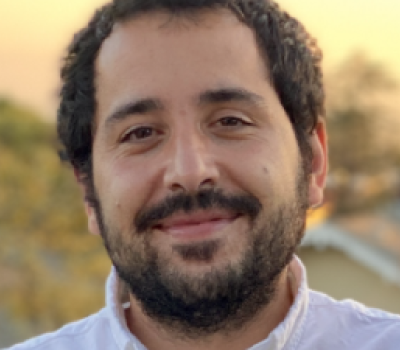
Title: Electromechanical Quantum Transduction with Interface Forces
Abstract: Transduction of signals between electrical, mechanical, and optical domains is central to modern computing, sensing, and communication systems. Emerging quantum technologies also require the development of transducers capable of converting quantum-level signals such as single photons and phonons with high efficiency and low loss. Traditional piezoelectric materials such as aluminum nitride and lithium niobate are widely used in classical piezoelectric and electro-optic transducers. However, for quantum applications, these thin films have large defect concentrations that lead to decoherence of quantum signals and the reduction in their transduction efficiencies. Our team recently discovered an electromechanical transduction mechanism that occurs at a superconductor-silicon junction. We propose using this new phenomenon to realize all-silicon electromechanical quantum transducers without the need for lossy piezoelectric films. The proposed quantum transducers will enable the realization of high-fidelity transduction between electrical, mechanical, and optical quantum signals.
Profile: Alp Sipahigil is the Ping & Amy Chao Family Assistant Professor of Electrical Engineering and Computer Sciences at the University of California, Berkeley. He has joint appointments as a Faculty Scientist at the Materials Sciences Division at Lawrence Berkeley National Laboratory and a supporting appointment at UC Berkeley Physics. He leads the Berkeley Quantum Devices Group which focuses on solid-state device research to advance quantum computation, communication and sensing. His group studies a wide range of physical systems including superconducting quantum circuits, color centers, integrated photonics and phononics. Prior to joining Berkeley in 2021, he was an Institute for Quantum Information and Matter postdoctoral scholar at Caltech. He received his Ph.D. in Physics from Harvard University in 2017 and his B.S. degrees in Physics and Electrical Engineering from Bogazici University in 2010.
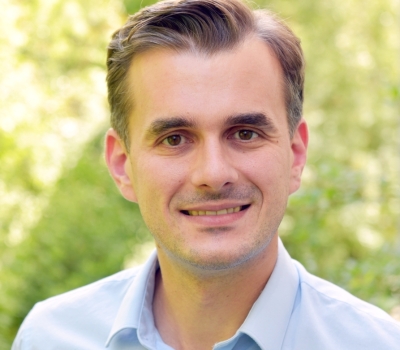
Title: Quantum Crossroads: Unraveling the Mysteries of Exciton-Magnon-Phonon Interactions
Abstract: As we navigate the 21st century, the advance of technology continuously approaches the physical limits of conventional electronic devices, challenging us to innovate beyond existing paradigms. The surge in energy consumption and demand for faster, more efficient computational technologies calls for a radical transformation in the materials that underpin our technological infrastructure. Quantum materials, with their extraordinary ability to manifest emergent properties from collective quantum phenomena, stand at the forefront of this scientific frontier. This project explores a crucial yet poorly understood aspect of quantum materials—the complex interplay between excitons, magnons, and phonons in the unique environment of two-dimensional transition-metal phosphorous trisulfides. Utilizing our pioneering development, cryogenic Time-Resolved Solid-State High-Harmonic Generation (TR-sHHG), we probe these interactions with unprecedented precision, uncovering new mechanisms of quantum control that could lead to revolutionary applications in computing and electronic devices. By coherently manipulating these quantum phenomena using light, we aim to unlock new, energy-efficient phases of matter, potentially transforming our approach to data processing and energy usage. Our research not only strives to push the boundaries of quantum dynamics but also to lay the groundwork for the next generation of technological innovation, where energy efficiency and computational power can reach new heights while meeting sustainability goals.
Profile: Michael Zuerch, originally from Germany, earned his diploma in physics with honors from Friedrich Schiller University, Jena, in 2010. He pursued his Ph.D. under Christian Spielmann at the same university, focusing on high-resolution imaging using laser-driven attosecond sources, and graduated with highest honors in 2014. Supported by the Alexander von Humboldt Foundation through a Feodor Lynen Fellowship, Michael relocated to the University of California, Berkeley in 2015. There, he conducted research with Stephen Leone and Daniel Neumark in the College of Chemistry, investigating carrier and lattice dynamics in semiconductor materials, two-dimensional materials, and magnetic nanomaterials using attosecond extreme ultraviolet pulses. In 2018, Michael was appointed leader of an independent Max Planck Research Group at the Fritz Haber Institute. In July 2019, he joined the faculty of the Department of Chemistry at UC Berkeley. The following year, he also became a Faculty Scientist at the Lawrence Berkeley National Laboratory. His groups current research focuses on the experimental study of structure and dynamics in complex, correlated solid-state materials.
2023 Fellows
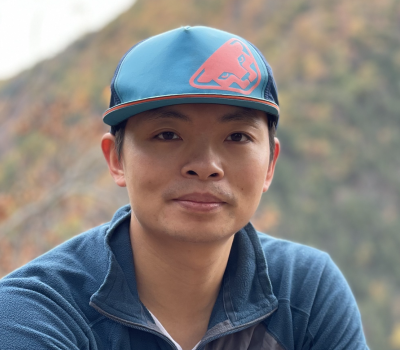
Title: Surprising Outcomes of Binary Stars at the Centers of Galaxies
Abstract: There is a supermassive blackhole at the center of nearly every galaxy. Millions of stars like our Sun orbit around the blackhole and a fraction of them are in binary systems. Little is known about the orbital evolution of these binary stars. We propose to systematically study their dynamics for the first time. Based on simple analytic arguments and numerical simulations, we make a few transformative predictions on the fate of these binaries and design creative ways of testing these predictions with existing telescopes.
Profile: Lu joined the Astronomy Department at UC Berkeley as an Assistant Professor in 2022. Lu received his BS in Physics from Peking University and PhD in Astronomy from University of Texas at Austin. After that, he spent 3 years as a Burke Postdoc Fellow at Caltech and 1 year as a Spitzer Postdoc Fellow at Princeton University before coming to Berkeley. Lu is a theoretical astrophysicist. His research theme is to understand the underlying physics in various energetic transient phenomena, such as radio bursts from neutron stars, neutron star mergers, black hole mergers, Sun-like stars being swallowed by supermassive blackholes, and stellar explosions. Observationally, these events produce the brightest sources which suddenly appear on the sky and quickly disappear afterwards --- leaving us wondering what happened in nature.
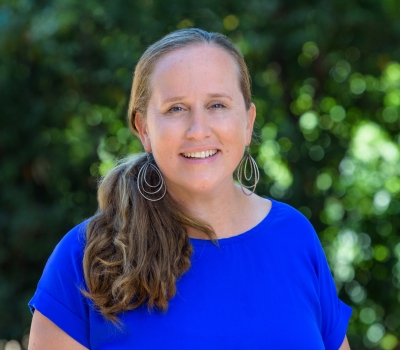
Title: CRISPR screening in primary immune cell models of HIV infection
Abstract: Viruses are master manipulators of our cell biology. Viruses usurp our host-encoded cellular machinery to efficiently infect our cells. My lab uses genetic screens to find the host genes that viruses require for infection as well as to uncover antiviral genes that inhibit virus infection. Here I describe a new application of genome editing technologies to create a novel method to study these key host/virus interactions directly in primary immune cells that are important targets of HIV infection. We will also create a data commons to allow for comparison of screen data and sharing more broadly with the scientific community. Broadly this work will allow for a more complete understanding of HIV interactions with human cells with implications for HIV cure as well as vector-based therapeutic approaches.
Profile: Molly Ohainle joined the Molecular and Cell Biology Department at UC Berkeley as an Assistant Professor in 2022. The Ohainle Lab uses functional genomics as well as molecular virology tools to explore basic mechanisms of viral replication, host antiviral effector function and virus adaptation to host cell barriers. The lab aims to define the molecular bases of how host antiviral genes block infection by viruses as well as to understand how viruses adapt to and evade these host cell restrictions with a focus on HIV and related retroviruses. Dr. Ohainle obtained her B.S. in Biological Sciences from UC Davis. She received Ph.D. training as a National Science Foundation Graduate Research Fellow at the University of Washington in the labs of Dr. Michael Emerman and Dr. Harmit Malik studying the evolution and function of host mutagenic enzymes that target and inhibit retroviral infection. As a Helen Hay Whitney Postdoctoral Fellow she explored how immunity and viral genetics contribute to disease outcomes in dengue virus infection in the lab of Dr. Eva Harris in the UC Berkeley School of Public Health. After a career interruption due to financial constrains related to affordable childcare access, Dr. Ohainle returned to academia in a position as a Senior Staff Scientist at the Fred Hutch and Affiliate Assistant Professor at the University of Washington. Here Dr. Ohainle began developing functional genomics tools to define cellular barriers to infection by HIV and related viruses that is the basis for the Ohainle Lab’s research program. Dr. Ohainle has funding from the NIH as well as the Shurl & Kay Curci Foundation, is a Leading Edge Faculty Fellow and has won several mentoring awards.
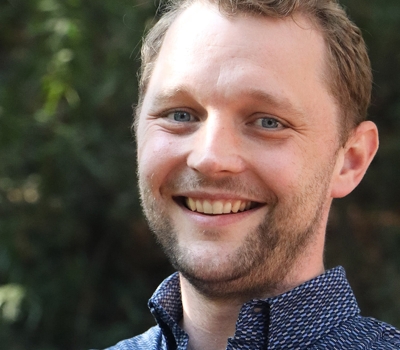
Title: Unlocking natural regeneration in plants by suppressing DNA repair
Abstract: The ability to regenerate organs and tissues is one of the most compelling processes in biology. Within the plant kingdom, a wide variety of species possess an extraordinary ability to regenerate whole organs naturally. However, this ability is missing from the majority important crop species, and the inability to regenerate plants from engineered or gene edited cells is currently the single biggest bottleneck to crop improvement. The Williams lab seeks to
understand the role that epigenetic information plays in determining the identity of plant cell
types, and how these mechanisms could be rewired to unlock cellular identity pathways and
enhance regeneration. With support from the Rose Hills Innovator Program, the Williams lab is
pursuing an exciting new avenue towards enhancing plant regeneration, as well as a deeper
understanding of the fundamental rules underpinning plant cell identity.
Profile: Ben Williams completed his PhD in Plant Sciences at the University of Cambridge, UK and his postdoctoral training at the Whitehead Institute for Biomedical Research at MIT. Since joining the Department of Plant and Microbial biology at UC Berkeley in July 2020, Dr. Williams has established a research program that seeks to define the fundamental role of plant epigenetics in gene regulation, cell identity and organ regeneration.
2022 Fellows
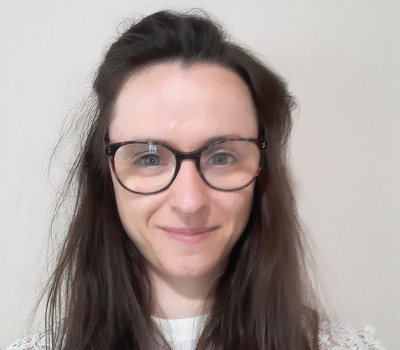
Title: Volcanology: Reconstructing Magma Storage Depths Using Fluid Inclusions
Abstract: Constraining the depths of magma storage feeding volcanic eruptions is vital to inform volcano monitoring and civil response, as well as to gain a deeper understanding of the formation of economical metal deposits and the evolution of the Earth’s crust. However, techniques using geophysical signals (e.g. earthquakes, ground deformation) cannot be used at many potentially hazardous volcanoes which show little activity at present, or have limited monitoring networks. More widely applicable petrological methods examining the chemical characteristics of previously erupted lavas and crystals are associated with large systematic and random errors on calculated depths (~50-400%). Recent advances in confocal Raman spectroscopy permit precise and accurate measurements of the densities of CO2-rich fluids trapped within growing crystals (termed fluid inclusions: FIs). The simple physical relationship between the density and pressure of a CO2-rich fluid means that distributions of FI densities can be converted into magma storage pressures with very small errors (~5-10%), and then magma storage depths using known crustal density profiles. We will investigate the utility of FIs by performing comparisons to more established methods to determine magma storage depths in several historic eruptions. Having optimized the workflow and identified any pitfalls, we will use FIs to investigate explosive volcanism in Hawai’i, which presents a significant hazard. Finally, we will work alongside the Hawaiian Volcano Observatory to determine just how quickly we can obtain estimates of magma storage depths during the next large eruptive crisis, and how this information can be used to inform decision making to mitigate societal risk.
Profile: Penny Wieser is an Assistant Professor in Earth and Planetary Science. She studies lavas, crystals, gases and aerosols erupted at active volcanoes to improve our understanding of magma storage, eruption dynamics and volcanic hazards. So far, her research has primarily focused on the Andean Southern Volcanic Zone (Chile), Kīlauea Volcano (HI), and the Cascade arc (USA), with collaborative projects involving recent eruptions in Iceland and La Palma. She is also passionate about the development of open-source packages in Python to make volcanology more reproducible and accessible, and enjoys running workshops showcasing the power of Python and building proficiency. Her group at Berkeley use scanning electron microscopy (EDS-WDS-EBSD) and Raman spectroscopy to measure the chemistry and structure of volcanic products, integrating these measurements into quantitative models of magma evolution. Prior to starting at Berkeley in 2022, Wieser received her Undergraduate and Masters degree from the University of Oxford (2017), her PhD from the University of Cambridge (2020), and conducted postdoctoral work at Oregon State University (2021-2022).
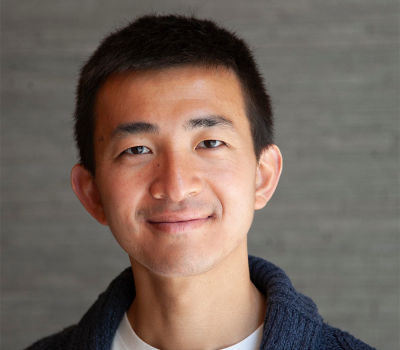
Title: Chemical Modulation of Antigen Presentation to T Cells
Abstract: Our T cells are powerful defenders against infections and cancer. However, sometimes they fail to clear tumors, and sometimes they mistakenly attack healthy cells. T cells rely on a delicate process called antigen presentation to see their friends and foes: recognition of peptide antigens presented by cancer cells is an important step in antitumor immunity, and inappropriate recognition of self-antigens underlies the pathology of autoimmune disorders. Despite its importance, there are very few tools for the investigation or therapeutic intervention of this process. We propose to use organic chemistry, chemical proteomics and functional genomics to discover new chemical tools to fine tune the adaptive immune response. These chemical tools will expand our ability to study antigen processing and enable a new therapeutic approach for cancer and autoimmune diseases.
Profile: Ziyang joined the Department of Chemistry at UC Berkeley as an Assistant Professor in 2022. His lab creates chemical tools to tweak our immune system and enable new therapeutic mechanisms for cancer and autoimmune diseases. Ziyang was born in Taizhou, China and received his B.Sc. in Chemistry from Peking University. After moving to the U.S., he received his PhD training with Prof. Andrew G. Myers at Harvard University as an HHMI International Predoctoral Fellow, where he developed a platform for the synthesis of new macrolide antibiotics. He continued his training as Damon Runyon Postdoctoral Fellow in the lab of Prof. Kevan Shokat at UCSF, where he devised chemical strategies for the brain-specific inhibition of kinases and the mutant-specific targeting of KRAS-driven cancer. He is a recipient of C&EN News 2021 Talented 12 Award.
2021 Fellows
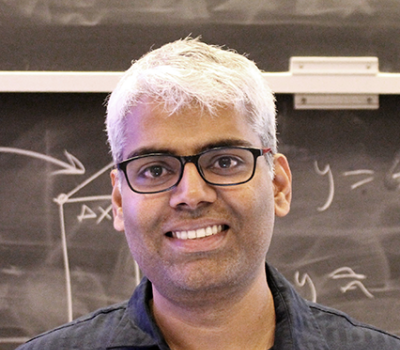
Title: Multimodal Intelligent Interfaces for Assistive Communication
Abstract: Several neurological conditions (like cerebral palsy, ALS) result in paralysis of all voluntary movements, including those of the vocal apparatus, causing total loss of spoken communication. Current assistive technologies for communication are based on residual functions like eye gaze, blinks or twitch of the cheek muscle to move a cursor on a screen and select characters/icons on an on-screen display. These solutions are often erroneous, unintuitive and laborious for paralyzed users. We propose to improve the current state of assistive communication technologies by integrating multiple neural and behavioral sensing modalities, and tightly integrating the graphical interfaces, and personalizing them to the user’s context. We will use state-of-the-art neural engineering and artificial intelligence to develop novel communication interfaces. Among the neural sensing modalities we will use are Electrocorticography (ECoG, invasive recordings from the surface of the cortex), and the non-invasive modalities include in-ear Electroencephalography (EEG) sensors and functional near infrared spectroscopy (fNIRS). These neural sensors augment eye trackers and Electromyography (EMG) sensors. On the software side, we will use on-device speech recognition and dialog management to incorporate the acoustic context of the user (speech directed towards the user), to provide an adaptive interface including word/ phrase level autocomplete suggestions driven by language models. Where available, we will create a digital voice from the subject’s own voice recordings, so the system can synthesize speech that sounds like the user, enhancing their sense of embodiment. We believe these strategies will lead to better information rates and robust communication solutions for paralyzed users.
Profile: Gopala Anumanchipalli is an Assistant Professor in Electrical Engineering and Computer Sciences at UC Berkeley and an Adjunct Assistant Professor at Dept. of Neurosurgery at UC San Francisco. His lab works at the intersection of Speech Processing, Neuroscience, and Artificial Intelligence with an emphasis on human-centered Speech and Assistive technologies. His work involves developing computational paradigms for bio-inspired spoken language processing and automated methods for early diagnosis, characterization and rehabilitation for disordered speech. He also develops methods to advance understanding of the neural mechanisms underlying speech/ language function in healthy individuals and creates algorithms for Brain-Computer Interfacing to decode these signals directly from the brain to externally restore communication in paralyzed patients.
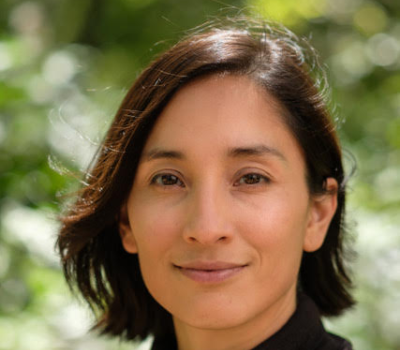
Title: Psychedelics-inspired plasticity therapeutics
Abstract: A rigid mind limits cognition. In neurological disorders, our ability to move, remember, empathize, learn, or recover from trauma is not limited by will but by the capacity of our neurons to generate components for mental flexibility. Plasticity in the brain counters this rigidity, yet we lack insight into opening plasticity windows in the brain. Psychedelics, such as psilocybin, have been used in Indigenous healing practices for millennia to engage cognitive connection and open pathways to healing. Likewise, intensive clinical exploration of psychedelics since the mid-20th century reveals their potential for treating neuropsychiatric conditions. While we know our genome contains the instructive cues for plasticity, the genome, by itself, cannot directly facilitate plasticity. Instead, it relies on RNA to coordinate instructive cues to alter neural circuit function. Andrea Gomez's research synthesizes two rapidly evolving fields: RNA biology and psychedelics. Advances in genome sequencing technologies highlight the diversity of RNA expressed in the brain, yet linking RNA to neural function remains a core challenge in neurobiology. Likewise, psychedelics' therapeutic potential comes at a critical time for innovation in mental health, as current treatments for neurological and psychiatric disorders are marginally effective. Her unique strategy using psychedelics to identify molecular plasticity programs will enable the discovery of novel RNA-based therapeutic targets to treat neurological conditions associated with defective neural plasticity.
Profile: Andrea Gomez (Laguna Pueblo/Chicana) is an Assistant Professor in the Department of Molecular and Cell Biology and the Helen Wills Neuroscience Institute at the University of California, Berkeley. She is also a member of the Executive Committee at the UC Berkeley Center for the Science of Psychedelics. Gomez received her Ph.D. in Developmental Genetics from New York University and conducted postdoctoral research at the University of Basel, Switzerland. Her work is devoted to understanding the instructive cues that sculpt patterns of brain activity. Her efforts led to the discovery of RNA-based programs that are critical for synaptic organization and plasticity. The Gomez lab uses state-of-the-art techniques to decode the brain's modular nature, including molecular biology, electrophysiology, and functional imaging. The robust and widespread neural plasticity induced by psychedelics motivates the Gomez lab to decode the synaptic mechanisms that underlie cognitive flexibility. Gomez started her lab at UC Berkeley in 2020 and has received several awards, including the European Molecular Biology Organization Advanced Fellowship, a Rennie Fund Fellow, a C.J. Herrick Early-Career Investigator, and is a Brain and Behavior Research Foundation Young Investigator.
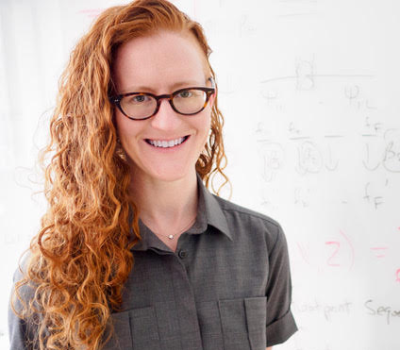
Title: Decoding the perfect message: mRNA design for vaccines and therapeutics
Abstract: The first approved mRNA vaccines, administered less than a year after the COVID pandemic began, have changed the face of medicine. I have focused my career on understanding how mRNA sequences specify a precise outcome: the right amount of protein made at the right time. My work has uncovered unanticipated constraints on sequence design. Now, I am applying my research to learn the rules to design the perfect synthetic mRNAs for therapeutic purposes in a wide range of different cellular contexts. Our powerful combination of machine learning and new genome-scale experiments will allow us to synthesize a new model of the parameters governing protein output and efficacy from therapeutic mRNAs.
Profile: Liana Lareau works to decipher the layers of information encoded in the genome that specify cellular form and function. Using machine learning and other computational approaches, she investigates how sequence determines the output of the genome as it is transcribed into RNA then translated into protein. She is a Shirl and Kay Curci Foundation Faculty Scholar and recently won the Excellence in Research award from the Laboratory for Genomics Research in support of her work sequencing SARS-CoV-2 virus genomes for pandemic surveillance. Before starting her faculty position in Berkeley’s Bioengineering department in 2019, she was supported by a Damon Runyon Postdoctoral Research Fellowship while working in the lab of Pat Brown at Stanford, where she used the new technique of ribosome profiling to understand translation of mRNAs. She is a proud Berkeley alumna, having completed her PhD here at Berkeley after undergraduate degrees in mathematics and biology from MIT.
2020 Fellows
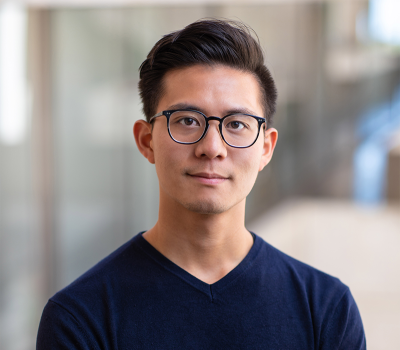
Title: Development of genome editing systems that bypass cellular DNA repair
Abstract: Precise genome manipulation is a powerful approach to accelerate biological research by enabling scientists to understand the causal role of genetic variation, create gene therapies that correct the root cause of genetic disease, or engineer cells for therapy, agriculture, or biotechnological manufacturing. Despite remarkable advances in genome engineering tools over the last decade, such as CRISPR-Cas nucleases, such approaches rely on cellular DNA repair pathways with highly variable outcomes. As a result, current state-of-the-art genome editing suffers from low efficiency and poor product purity. We propose to develop new enzyme systems for more deterministic genome manipulation.
Profile: Patrick Hsu is an Assistant Professor of Bioengineering and Deb Faculty Fellow at UC Berkeley. His lab invents molecular technologies to improve human health by engineering genetic circuits that control biological function, creating designer gene and cell therapies, and developing rapid, point-of-care diagnostics. Patrick played a key role in the early development of the CRISPR-Cas9 system for human genome editing and has continued to pioneer novel genome editing tools including CRISPR-Cas13 systems for the treatment of neurological disorders. He received A.M. and Ph.D. degrees from Harvard University, training with Feng Zhang and Xiaowei Zhuang at the Broad Institute of MIT and Harvard and the McGovern Institute for Brain Research at MIT. As a lead scientist at Editas Medicine, he also directed preclinical discovery projects to translate these tools for treating human genetic disorders. Patrick began his independent group as a Salk-Helmsley Faculty Fellow at the Salk Institute from 2015-2019 before joining UC Berkeley as a faculty member in the Department of Bioengineering. He has been recognized in Forbes' 30 Under 30, the NIH Early Independence Award, the MIT Technology Review's Innovators Under 35, Berkeley Engineering's Deb Faculty Fellowship, and the Rainwater Prize for Innovative Early-Career Scientists. Learn More.
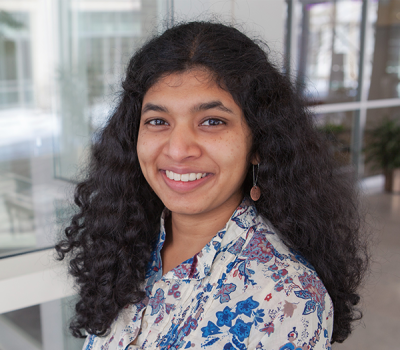
Title: CRISPR-guided insights in archaeal methane metabolism
Abstract: Methane is an abundant greenhouse gas with a near-term warming potential almost a hundred times that of carbon dioxide. Even sustained methane emissions at the current rate could have a devastating impact; but methane levels are, in fact, rising faster than previously predicted – resulting in an imminent threat to us and to our environment. There are no prevailing efforts to combat the emerging methane crisis because the sources and sinks of methane remain poorly characterized. In my lab, we study two elusive groups of archaeal microorganisms called methanogens (methane producers) and anaerobic methanotrophic archaea (ANME; methane consumers). Ultimately, interactions between methanogens and ANME are vital for the global methane cycle yet these organisms are poorly characterized, largely due to a paucity of sophisticated genetic tools. The proposed research aims to develop high-throughput genome-editing tools and techniques that will enable insights into the mechanisms of methane production by methanogens and methane consumption by ANME. Ultimately, this research will significantly advance efforts towards alleviating the methane crisis by enabling technological advances to sequester atmospheric methane and convert it into short chain acids that are useful as industrial feedstocks.
Profile: Dipti Nayak earned her Bachelor’s degree in Environmental Engineering from Delhi University in 2007 and a M.S. in Environmental Sciences and Engineering from Stanford University in 2009. She obtained her Ph.D. in 2014 from the Department of Organismic and Evolutionary Biology at Harvard University. As a graduate student under the guidance of Christopher J. Marx she studied the evolution of single-carbon metabolism in bacteria. From 2015 to 2019, she was Simons Foundation fellow of the Life Sciences Research Foundation and a Carl R. Woese Institute for Genomic Biology postdoctoral fellow with William W. Metcalf at the University of Illinois Urbana-Champaign. At Illinois, she developed CRISPR-Cas9 genome editing tools for methanogenic archaea. In Fall 2019, she joined the Department of Molecular and Cell Biology at UC Berkeley as an assistant professor in the Genetics, Genomics and Development division. Dipti is a recipient of the Beckman Young Investigator award and a 2020 Searle Scholar. Learn More.
2019 Fellows
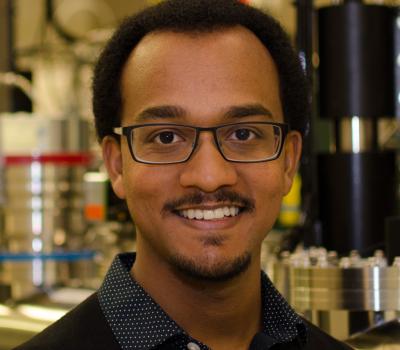
Title: Quantum materials for energy conservation, energy conversion & energy storage
Abstract: If humanity is to profoundly alter its environmental footprint in the twenty-first century and avoid the most devastating consequences of climate change, it is imperative to meet the challenge of escalating global energy demand with the innovation of unprecedentedly efficient renewable energy conversion and storage systems. However, our accelerating reliance on information and communication technology (ICT) also mandates technologically disruptive scientific breakthroughs that allow electronic, communication, and computing devices to operate at orders of magnitude lower energy consumption. These era-defining problems can only be truly solved by a new fundamental understanding of how to control matter to eliminate energy loss in the movement and manipulation of charged particles like electrons. Our lab designs and synthesizes new atomically-thin, precisely tailored materials in which the collective behavior of electrons can be studied and exquisitely controlled. We leverage these materials to uncover the principles that underlie efficient manipulation of electron transport within solids—the basis for novel ultralow-power electronic devices—and across solid–liquid interfaces—enabling the next-generation of fuel cells and electrolyzers for renewable energy conversion and storage.
Profile: Kwabena Bediako was born in Ghana, West Africa. He moved to the US in 2004 for his undergraduate studies in Chemistry at Calvin College, MI, graduating with honors in Chemistry in 2008. After a year working at UOP Honeywell in IL where he researched new catalysts for the petrochemical and gas processing industries, he traveled from the Midwest to the East Coast to begin his graduate studies in Inorganic Chemistry with Prof. Daniel Nocera at MIT (and later Harvard University). His graduate research focused on structural and mechanistic studies of water splitting electrocatalysis at cobalt and nickel compounds. After receiving his Ph.D. in 2015 from Harvard University, Kwabena began postdoctoral work in Prof. Philip Kim's group in the Department of Physics at Harvard, where he studied ion intercalation and quantum transport in 2D van der Waals heterostructures. In July 2018, Kwabena joined the faculty of the UC Berkeley Department of Chemistry. His group pursues research at the intersection of chemistry and physics, with a particular emphasis on electrochemical manipulation of two-dimensional materials. He is also the recipient of the Office of Naval Research 2019 Young Investigator Award. Learn More.
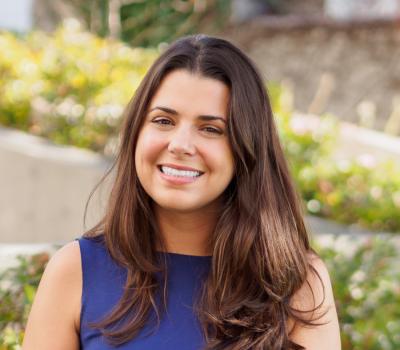
Title: Uncovering the molecular basis of natural activation of the Unfolded Protein Response
Abstract: Stress response pathways are mechanisms have evolved to allow cells to adapt to changing conditions. Defects in these pathways are often associated with diseases, either because their deficiency makes cells poorly resistant to physiological changes or because their hyperactivation may lead to chronic stress. The Unfolded Protein Response (UPR) is a particularly important stress response pathway that is heavily associated with human disease, including diabetes, hereditary blindness, neurodegeneration, and multiple myeloma. There is strong evidence that both under- and over-activation of the UPR are pathogenic, but any concrete understanding how the UPR contributes to these diseases has been hampered by the fact that scientists still do not know how this pathway is activated or which genes modulate its activity. This lack of understanding is due, in part, to the fact that UPR activity has been primarily studied in laboratory conditions by harsh, non-physiological activation by drugs. Our lab discovered meiosis as an experimentally tractable context in which the UPR is naturally activated. We propose to leverage this unique natural instance of UPR activation to find the long-mysterious set of factors that control UPR activity.
Profile: Gloria Brar earned her B.A. in Molecular and Cell Biology from UC Berkeley in 2002 and her Ph.D. in Biology from MIT in 2008. As a graduate student with Angelika Amon, she studied the regulation of chromosome cohesion and pairing during meiosis. Gloria was a postdoctoral fellow in the lab of Jonathan Weissman at UCSF, where she used the new technology of ribosome profiling to define the gene regulation that occurs as cells proceed through meiosis. In January 2014, Gloria returned to UC Berkeley as an Assistant Professor in the MCB department. The Brar lab studies the interconnectedness of different “levels” of gene expression using classical and genomic approaches. They focus primarily on the gene regulation that drives the dramatic cellular remodeling necessary for gamete formation during meiotic differentiation. Gloria is a Pew Scholar, a recipient of an NIH Director’s New Innovator Award, and an Alfred P. Sloan Fellowship. Learn More.
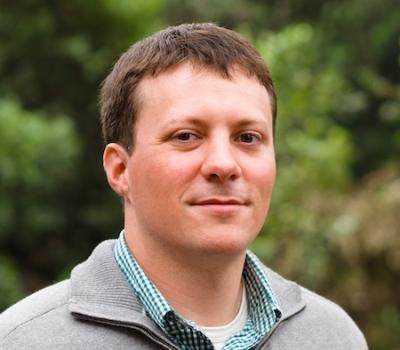
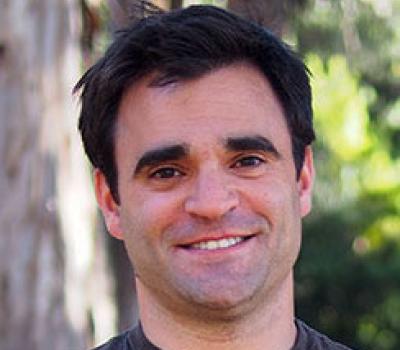
Team Award: Helen Wills Neuroscience Institute and Molecular & Cell Biology
Title: Development of a sonogenetic toolkit to control neural activity with ultrasound
Abstract: Manipulating electrical activity in the brain is central to basic neuroscience research and is clinically important for the treatment of neurological disorders including Parkinson’s disease, depression, epilepsy, and schizophrenia. Current approaches to modulate neural activity are limited in the depth of tissue accessible without invasive surgery, the duration of modulation, and the number of parallel manipulations that can be accomplished. We propose developing a solution to these challenges: a set of molecular tools that harness force from ultrasound to precisely control neuronal activity. Ultrasound has been known since the 1950s to effect electrical activity in the brain and its advantageous properties compared to electrical and optical stimulation have generated increased interest in its research and therapeutic applications. However, the mechanisms underlying the effects of ultrasound remain unknown and use to date has generated variable or unpredictable results. We have recently identified an ion channel that is directly activated by ultrasound and may be responsible for some biological effects of ultrasound administration. We propose building upon this discovery to characterize and engineer a set of genetically-encodable ultrasound-sensitive ion channels. We will introduce these tools in mice to reliably and specifically control genetically defined brain circuits using focused, low-intensity, transcranial ultrasound.
Profile: Stephen Brohawn is an Assistant Professor of Neurobiology in the Department of Molecular & Cellular Biology and the Helen Wills Neuroscience Institute. His lab is focused on understanding principles of mechanical force sensation in the nervous system from the molecular to physiological levels. He is a New York Stem Cell Foundation - Robertson Investigator and a recipient of a Klingenstein-Simons Neuroscience Fellowship Award, a McKnight Scholar Award, and a NIH Director’s New Innovator Award. Stephen received his B.S. in Biochemistry from the University of Delaware in 2004, his Ph.D. in Biology from the Massachusetts Institute of Technology 2010 where he worked with Thomas Schwartz Ph.D on the structure and biophysics of the nuclear pore complex, and completed his postdoctoral training as a Helen Hay Whitney fellow at The Rockefeller University in 2016 where he worked with Roderick MacKinnon, M.D. on the structure and function of mechanosensitive ion channels. Learn more.
Profile: Hillel Adesnik is an associate professor of neurobiology. He studies the neural basis of sensory perception. His lab uses cutting edge optical and genetic technologies to dissect the cortical circuitry responsible for our ability to use touch and vision to interact with the world. The ultimate goal of his laboratory is to achieve a mechanistic understanding for how precise spatiotemporal patterns of activity in the brain give rise to our sensory experience. Dr. Adesnik received his PhD in neuroscience from USCF where he studied the molecular basis of long term memory, and was a Helen Hay Whitney Foundation postdoctoral fellow at UCSD where he investigated the excitatory and inhibitory circuits that represent sensory space in the cerebral cortex. He is currently a New York Stem Cell Foundation Robertson Investigator. Learn More.
2017 Fellows
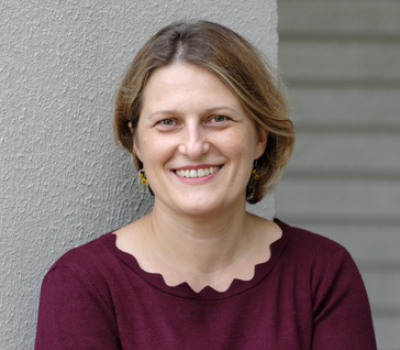
Title: Molecular basis of the age-related reproductive decline in females
Abstract: The age-related inability of the egg to develop into a healthy embryo, an oopause, is linked to the egg mitochondrial dysfunction. Mitochondria are maternally inherited organelles that provide cells with energy and play a central role in cellular longevity. Thus, mitochondrial dysfunction is an important factor contributing to unexplained female infertility and repetitive miscarriages. As the female organism ages, so do the mitochondria of the egg. Interestingly, the mitochondrial transfer from a “young” egg into an “aged” leads to rejuvenation of the latter. However, the biological explanation for this phenomenon is far from complete, because the molecular mechanisms that control ageing of egg mitochondria remain unexplored. Our lab is interested in understanding how mitochondria in the eggs of young animals differ from those of aged females with the specific emphasis on mitochondrial calcium uptake and its regulation. Our goal is to determine what exactly is required to reverse the process of ageing, restore a healthy mitochondrial function, and promote embryo survival.
Profile: Polina V. Lishko studies the cellular mechanisms of mammalian fertilization. Her team uses innovative technologies to study how tiny electrical currents that are produced in response to flow of ions across cellular membranes regulate fertility potential of the egg and sperm cells. By combining biophysics, biochemistry and cell biology approaches, her team works on the development of nonhormonal unisex contraceptives, as well as investigates the molecular mechanism of mammalian egg longevity. In addition to being a Pew Scholar, Lishko has received the Hellman Faculty Fund, the Sloan fellowship, Margaret Oakley Dayhoff Award in Biophysics and Matthew P. Hardy Young Andrologist award from American Society of Andrology. She received a Ph.D. in biophysics from the Bogomoletz Institute of Physiology at the National Academy of Sciences of Ukraine. As a postdoctoral researcher at Harvard Medical School, Lishko studied molecular mechanisms of vision, and later worked on the physiology of temperature and pain sensors. From 2006 to 2011, Dr. Lishko was an instructor at the University of California, San Francisco, where she studied the regulation of sperm physiology by ion channels. In 2012, she joined the faculty of the University of California, Berkeley as an assistant professor of molecular and cell biology. Learn More.
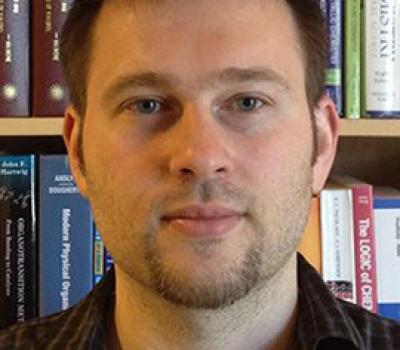
Title: Synthetic Antibiotic Drug Discovery Platforms Inspired by Natural Products
Abstract: The rise of pathogenic bacteria resistant to known antibiotics is a growing concern with “potentially catastrophic consequences” as recently noted by The Center for Disease Control. Worldwide, over 700,000 deaths are attributed to bacterial infections annually and hospital acquired bacterial infections incur an estimated direct health care cost of up to $40 billion annually. Microbial evolution, antibiotic misuse, and a significant abandonment of antibiotic drug discovery programs all greatly threaten to return our world to the pre-antibiotic era.Complex natural products and their derivatives remain at the heart of antimicrobial drug discovery, yet the pace at which novel antibiotics, especially those with unique mechanisms of action, are discovered and optimized has greatly declined over the last 50 years. Using natural products as inspiration, and a bottom-up synthetic chemistry approach, we will pave the way forward to new, structurally unprecedented antimicrobial agents for the potential treatment of human bacterial infections
Profile: Tom Maimone obtained his B.S. degree in chemistry from UC-Berkeley in 2004. From 2005-2009 he was a Ph.D. student in the Baran Research group at The Scripps Research Institute wherein he completed total syntheses of the alkaloids hapalindole U and ambiguine H, and was part of the team that completed the first laboratory synthesis of the complex diterpene vinigrol. From 2009-2012, Tom was an NIH Postdoctoral Fellow in the laboratory of Prof. Steve Buchwald at MIT researching Palladium-catalyzed methods for carbon-oxygen and carbon-fluorine bond formation. In July 2012, Tom returned to UC-Berkeley where he is an assistant professor in the department of chemistry. His research group focuses on streamlining the synthesis of complex natural products with important biological properties, developing new synthetic transformations, and undertaking medicinal chemistry on complex natural-product inspired scaffolds. He is the recipient of an Alfred P. Sloan Fellowship, UC-Berkeley Hellman Fellowship, Cottrell Scholar award, NSF Career Award, the 2016 Novartis Early Career Award in Organic Chemistry, and the 2017 Bristol-Myers Squibb Unrestricted Grant in Synthetic Chemistry. Learn More.
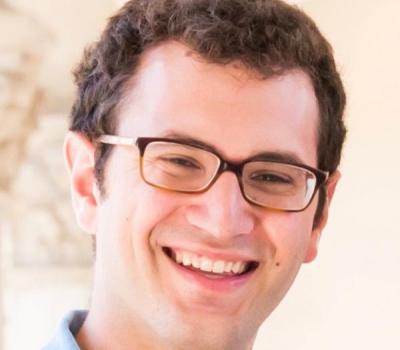
Title: Earth’s climatic thermostat: chemical weathering of oceanic crust as a key controller of Earth’s surface temperatures?
Abstract: Understanding what controls Earth’s climate on geological (million year) timescales and how the Earth has remained habitable over the past 4.5 billion years is a key area of research in Earth and Planetary Science. Earth’s climate is generally thought to be stabilized on geological timescales through weathering of terrestrial rocks, which promotes the conversion of CO2 into carbonate minerals — CO2 is a greenhouse gas that increases surface temperatures. Thus, removing it from the atmosphere provides a means to lower global temperatures. It has recently been proposed instead that submarine weathering of oceanic crust regulates climate. Specifically warmer climates lead to warmer oceans and thus warmer fluids circulating through oceanic crust. As weathering rates increase with temperature, these warmer fluids increase oceanic crust weathering rates, converting more CO2 to carbonate minerals (stored in oceanic crust), lowering atmospheric CO2 levels and stabilizing climate. If correct, this changes the paradigm of how climate has been regulated on Earth’s surface over geological time as well as potentially on exoplanets. However, this idea remains untested. Here, I propose to test it by measuring carbonate formation temperatures formed in oceanic crust from the past 170 million years using new isotopic techniques. Mean global temperatures are known to have cooled by ~15-20°C over this period. If carbonate formation in oceanic crust responds to ocean temperatures, then measured formation temperatures should cool over this time period as well.
Profile: Daniel Stolper joined the Department of Earth and Planetary Science as an assistant professor in 2017. His research focuses on scientific problems related to the rock record, microbiology, and biogeochemical cycles in the past and present. These include developing new records of the history of atmospheric oxygen concentrations, paleoclimate reconstructions of past ocean temperatures, and studying feedbacks between the solid and surface earth. Daniel received his Ph.D. in geobiology from Caltech in 2014 and then spent 2 years as a NOAA Global and Climate Change postdoctoral fellow at Princeton before coming to Berkeley. Daniel’s laboratory is focused on mass spectrometric measurements of molecules with multiple rare, stable isotopes (known as "clumped” isotope geochemistry) from both environmental and experimental samples. He is also an affiliate scientist at the Lawrence Berkeley National Laboratory in the Earth and Environmental Sciences Area. Learn More.
2014 Fellows
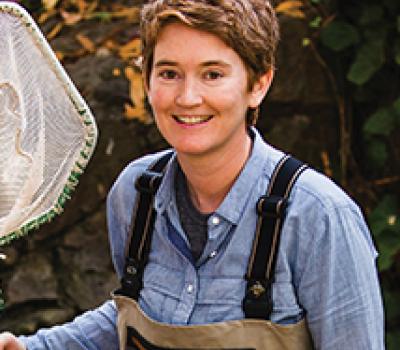
Title: Balancing Salmon Populations, Aquatic Biodiversity, and Water Resource Needs During Drought
Abstract: One of the most pressing challenges in the 21st century will be to balance societal needs for freshwater with the maintenance of aquatic biodiversity in the face of climate change. Water withdrawals and climate change pose especially grave threats to stream biodiversity in arid regions, like the western US. Although many species have adaptations for withstanding drought, these limits will be tested with increased demands for scarce freshwater. How much water is needed to sustain biodiversity is an open question. Such knowledge gaps hamper our ability to design and evaluate the ecological benefits of innovative water conservation projects that strive to balance competing demands for freshwater. These seed funds will be used to develop a research program to identify flow thresholds for sustaining biodiversity during drought, which will be a major step towards providing managers and policy makers with flow targets to support aquatic biodiversity, including Pacific salmon, during drought.
Profile: Stephanie Carlson joined the Department of Environmental Science, Policy, and Management as an Assistant Professor in 2008. Her research focuses on the evolutionary ecology and conservation of freshwater fishes, and strives to illuminate how evolution and ecology interact to shape wild populations and influence their persistence, particularly those exposed to anthropogenic influences. Stephanie received her Ph.D. in Aquatic and Fishery Sciences, University of Washington, Seattle in 2006. She then - as a Marie Curie Early Stage Training Fellow - spent five months at the Centre for Ecological and Evolutionary Synthesis, University of Oslo, before returning to as a NSF Postdoctoral Research Fellow in Biological Informatics at the University of California, Santa Cruz (Applied Mathematics and Statistics). Learn More.
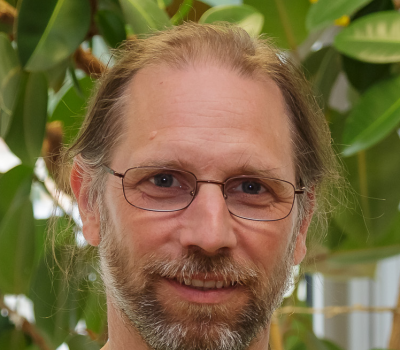
Title: A Quantum Mixer for Hybrid Quantum Computing
Abstract: Modern quantum technology allows experimental control of the state of atoms and superconducting devices at the level of individual quanta. Our goal in this project will be to implement a quantum interface between single particles and superconducting circuits, thus bridging the gap between these disparate technologies. Such a hybrid interface would allow us to create "Schrödinger cat" states between a single atom and a superconducting quantum circuit, where the state of the atom is fundamentally linked to the macroscopic state of the circuit. Besides the fundamental interest in such an experiment, our approach will combine the exceptional coherence of atomic systems with the speed and flexibility of superconducting electronics. Thus, we expect to lay the foundations for a scalable quantum information architecture composed of atomic systems and electrical circuits. The key step towards these goals will be developing the quantum analog of a frequency mixer."
Profile: Hartmut Häffner is an Assistant Professor for Physics at UC Berkeley. He is well-known for his contributions to ion trap quantum computing, and in particular his seminal work on teleportation and entanglement.
Häffner received his PhD from the University of Mainz/Germany for testing quantum electrodynamics in strong electric fields with single ions. After a side trip studying quantum chaos at NIST/Gaithersburg with William Phillips, he rediscovered his passion for trapped ions and joined Rainer Blatt's group in Innsbruck to built a quantum computer with trapped ions. Hallmarks of his work at Innsbruck were the a universal set of quantum gates, teleportation of quantum states between two atoms and tomography of an eight-particle entangled state.
From 2009 on at UC Berkeley, he leads an internationally-recognized group on trapped ions aimed at developing novel quantum computing technologies. For this, Häffner's group works on interfacing single ions to solid state devices. One of their key innovations was the development an ion trap set-up with innovative analytical and surface cleaning tools to reduce surface noise. Häffner's group also studies many-body physics with ultra-cold ion strings. In particular, the group experimentally investigated the limits of the density-matrix formalism and pioneered a novel method to detect quantum correlations locally. Learn More.
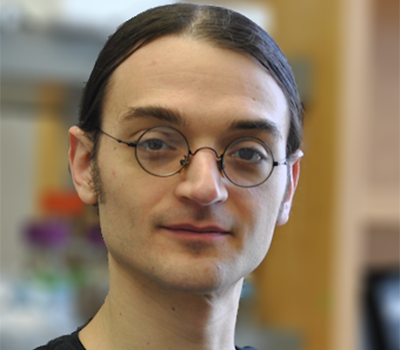
Title: Mechanistic Basis of Post-Transcriptional Control of Gene Expression
Abstract: Important biological processes depend on the regulation of genes after they are copied into mRNA, but we lack a general understanding of the cellular machinery that controls the fate of mRNAs in the cytoplasm. Recent work has revealed hundreds of mRNA-binding proteins in human cells, and it is likely that many of these influence which mRNAs are translated into proteins and which are degraded. However, existing approaches to catalogue these RNA-protein interactions do not reveal their effects. Here, I propose to develop and apply an innovative strategy to survey globally the proteins that affect the expression of mRNAs. I will survey comprehensively the regulatory activity of proteins in the cell, revealing the broad outlines of how gene expression is controlled at the level of the mRNA and setting the stage for more detailed future understanding.
Profile: Nicholas Ingolia joined the Molecular and Cell Biology department at the University of California, Berkeley as an Assistant Professor in January 2014. He was previously a Staff Member at the Carnegie Institution for Science, Department of Embryology, in Baltimore, MD. He received his Ph.D. in Molecular and Cellular Biology from Harvard University, in Cambridge, MA, under the supervision of Andrew Murray, where he worked on synthetic and systems biology analysis of gene regulatory networks. He went on to post-doctoral work with Jonathan Weissman at the University of California, San Francisco (UCSF), CA, where he developed ribosome profiling. His own laboratory (http://www.ingolia-lab.org/) seeks to better understand the molecular basis and cellular roles of translational regulation. He was selected as a Searle Scholar in 2011. Learn More.
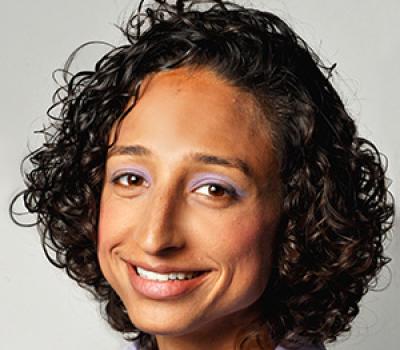
Title: Personalized Healthcare: Developing Large-Scale Engineered Cartilage Surfaces
Abstract: Osteoarthritis is the leading cause of disability in Americans, accounting for approximately 20% of all disabilities and over $100 billion in medical care costs. In the last decade, regenerative medicine has advanced towards personalized biological treatment strategies for musculoskeletal diseases, including osteoarthritis. My laboratory employs tissue-engineering techniques to cultivate cartilaginous tissues by encapsulating cells within a three-dimensional biocompatible scaffold. With this technique we are able to cultivate engineered cartilage plugs with structural and functional properties of healthy native tissues. However, scaling this technology towards producing larger constructs and surfaces has been a significant challenge in the field, due to limited nutrient diffusion. I propose a novel method of using fractal fabrication to develop large-scale patient-specific engineered cartilage surfaces. Successful completion of this proposal will have a significant impact on the ability to use regenerative medicine strategies in treating painful osteoarthritis.
Profile: Professor Grace D. O’Connell is the director of the Soft Tissue Biomechanics Laboratory (STBL) in the Department of Mechanical Engineering. Dr. O’Connell joined the faculty at Berkeley in 2013. Her research is focused on mechanobiological relationship of soft tissues in the musculoskeletal system, including articular cartilage and intervertebral discs. The lab uses tissue culture and engineering techniques to understand the multi-scale effects of disease and injury. Damage and injury to articular cartilage and intervertebral discs are the top two causes for disabilities in Americans, leading to medical care costs over $130 billion a year.
Current work at STBL is focused on developing large-scale engineered tissues as a potential biological repair strategy for damaged tissues. Current cartilage tissue engineering strategies have been successful in developing small repair plugs. However, large anatomical tissues will need to be cultivated for this technology to become a clinically viable repair option. Limited nutrient diffusion has been a significant challenge in growing large tissues. As part of the Rose Hills Innovator Program, STBL will use a honeycomb manufacturing method to cultivate large-scale anatomical engineered cartilage surfaces. Learn More.
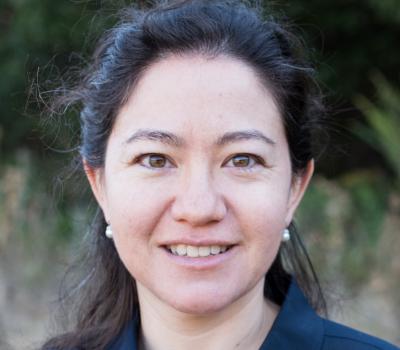
Title: Applications of Combinatorics to Statistical Mechanics, Integrable Systems, and Physics
Abstract: Lauren Williams' research program aims to apply combinatorial and algebraic tools to a variety of interrelated questions in statistical mechanics, integrable systems, and physics. More specifically, there are three main directions in her current research: the asymmetric exclusion process, which involves particles hopping on a one-dimensional lattice, and has been cited as a model for traffic flow and protein synthesis; soliton solutions to the KP equation, which provide a good model for the behavior of shallow water waves; the mathematics behind scattering amplitudes in quantum field theory, which predict the interaction of massless particles.
Profile: Lauren Williams grew up in southern California, the oldest of four sisters. After high school she went to Harvard where she graduated in 2000 with a BA in Mathematics. She studied for a year at Cambridge, completing "Part III of the Mathematical Tripos," and then attended MIT, where she received her Ph.D. in Mathematics in 2005. Following her PhD, Lauren spent a year at Berkeley as an NSF Postdoctoral Fellow and then three years at Harvard as a Benjamin Peirce Assistant Professor. She returned to Berkeley as an assistant professor in 2009, and was promoted to associate professor with tenure in 2013.
Lauren's research focuses on algebraic, enumerative, and topological combinatorics, and their connections with algebraic geometry, representation theory and physics, with total positivity and cluster algebra among her specialties. During her career, she has won various awards including the National Science Foundation CAREER award, the Sloan Research Fellowship, the Hellman Family Faculty Fund, and the Prytanean Faculty Award; she is also a Fellow of the American Mathematical Society. Learn More.
Rose Hills Innovators News
Building Drugs from Scratch
New Tools to Visualize the Insides of Volcanos
Bringing Indigenous Knowledge to Neuroscience
Launch Announcements
June 13, 2014 - UC Berkeley News Center: Five early-career faculty named Rose Hills innovators.
February 20, 2014 - The Daily Californian: New grant allows early-career UC Berkeley faculty to pursue STEM research.
February 18, 2014 - UC Berkeley launched today the Rose Hills Innovator Program, a new initiative to support distinguished early-career faculty in the fields of science, technology, engineering and math (STEM). The program aims to strengthen the efforts of Berkeley researchers by providing seed support for projects with exceptionally high scientific promise and the potential to generate significant follow-on funding.
Faculty selected as Rose Hills Innovators will receive up to $50K/year for up to three years in research support. Please see the Rose Hills Innovators website for additional information.
The program was established with the generous support from The Rose Hills Foundation. The Foundation also supports UC Berkeley graduate students and undergraduates in the STEM disciplines as well as the SURF/Rose Hills summer undergraduate research fellowship.

